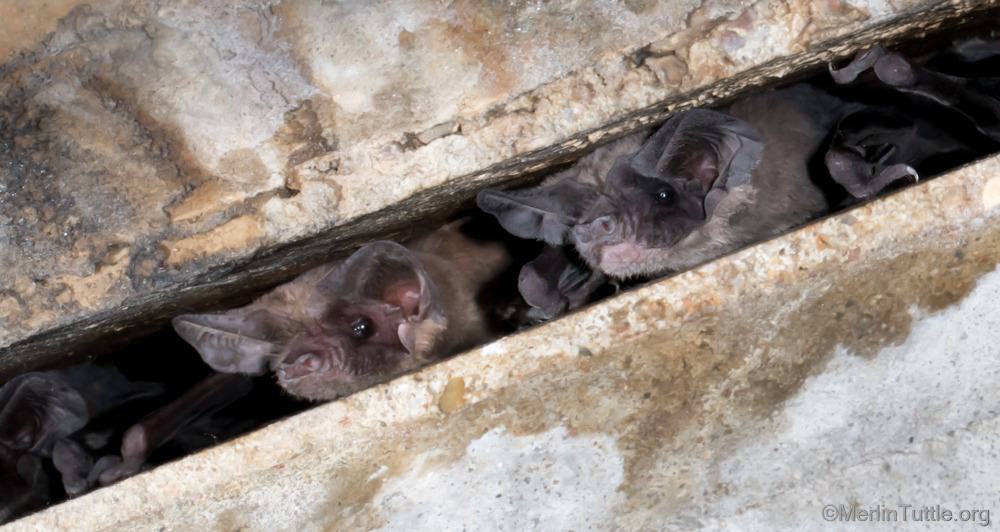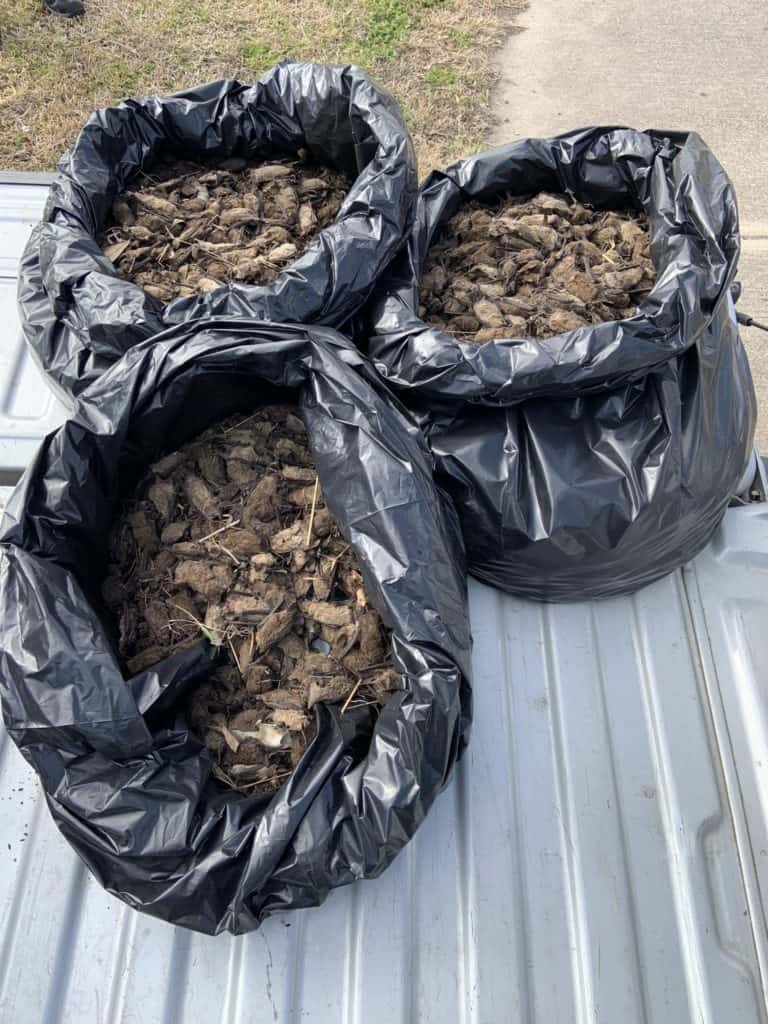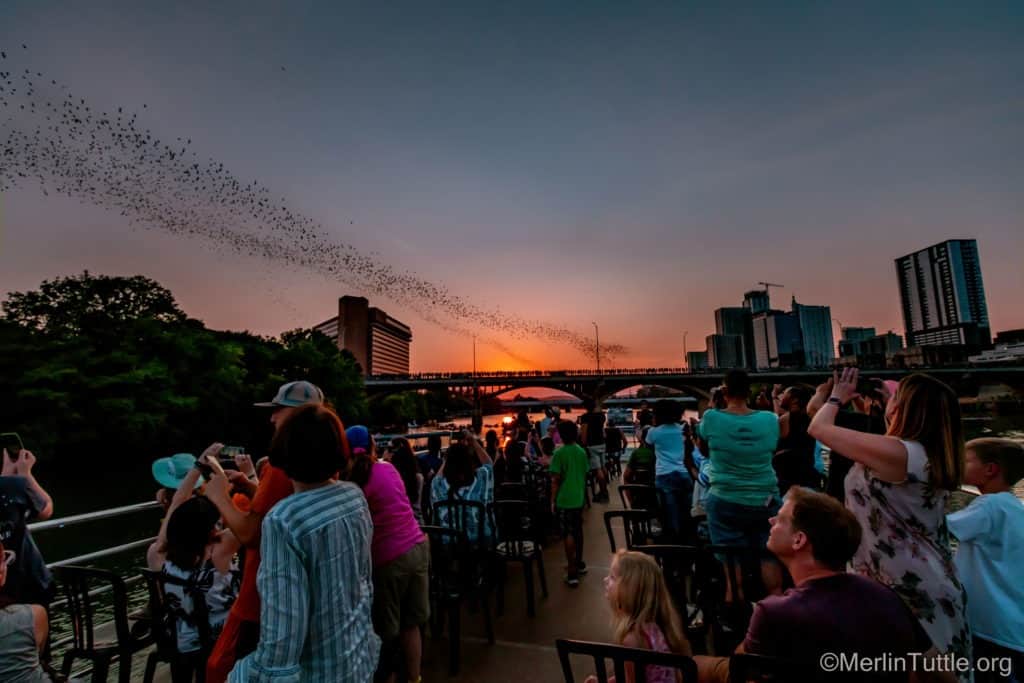Given overall warming trends, we weren’t surprised to see some 70 to 80° F days in January and February of 2021. But that hardly tells the full story!
Beginning on February 10th, historically low temperatures were recorded across Texas. For eight consecutive days (February 10–18), the temperature hovered between 37° and 9° F with six inches of snow on the ground in Austin, Texas. The first reasonable feeding opportunity for bats likely didn’t occur before the 21st.
The last similar event occurred 32 years ago in 1989. In a 9-day period (December 16–24) the daily temperature ranged from 51 to 4° F but remained below freezing for only two days versus seven in 2021. Fewer people were concerned in those days, but at least hundreds of killed bats were reported.
The recent event, Winter Storm Uri, created a disaster for overwintering Brazilian free-tailed bats (Tadarida brasiliensis). Encouraged by warming trends, more and more bats have remained in their summer roosts year-round instead of migrating south for winter. In recent years, hundreds of thousands have overwintered in bridge crevices of Central Texas, especially in the Austin area. Additionally, over the last four decades, an estimated 1,000 more annually have remained in Bracken Cave.
Unlike many other temperate-zone bats, Austin’s free-tails are not true hibernators. They do store fat in the fall and can survive for more than six weeks without feeding when roosting at 41° F. In Central Texas, they emerge and successfully feed when evening temperatures are 50° F or above, and in traditional winters they seldom would need to wait more than 10 days between feedings.
To survive for eight days with average temperatures well below freezing would be an extreme challenge. Bats have the largest surface area per volume of any warm-blooded animal, and active free-tails maintain body temperatures of roughly 102° F. Following the recent weather crisis, just warming up to go hunting was undoubtedly prohibitive for many, and it’s difficult to imagine that the insects the bats depend on for food would have been immediately abundant. Even though daytime temperatures averaged 78° F over four consecutive days beginning on February 21st.
Many concerned Austinites wondered why accumulations of dead and dying bats steadily grew through at least the 25th, despite the return to warm weather. The answer is two-fold. Many bats likely were still alive but too weakened to go hunting. Some of those may take a week or more to die. Also, those that literally froze to death could take weeks to fall from their roosting crevices. Tendons in their toes are designed to automatically lock the bats’ claws firmly to the roosting crevice until consciously released. Thus, a bat may hang in place long after its death
Concerned individuals who have been checking roosts for mortality report finding hundreds to thousands of newly fallen bats daily at single bridges, with more yet to drop. We’ll never know how many perished at Austin’s famous Congress Avenue Bridge where most dead bats fall into the water. However, Lee Mackenzie, who monitors Central Texas emergences using Doppler weather radar, noticed a drop from the pre-freeze maximum of over 20,000 to a subsequent maximum of about 5,700. At the McNeil Bridge, just north in Round Rock, where he estimated some 300,000 overwintering, there were also substantial losses. Nate Fuller, Texas Parks and Wildlife Bat Biologist, visited this bridge and estimated seeing ten thousand dead bats.
The loss of tens of thousands of free-tailed bats in the current event is sad, but the vast majority still migrate, so likely will escape immediate harm. The more serious threat may come from the longer-term effects of severe weather on insect populations that sustain a wide variety of bats and other animals.
The intensity of this storm is consistent with climatologist forecasts of increasingly severe weather events. Thousands of Brazilian free-tailed bats, killed beneath bridges, are easily discoverable and cause for concern. However, even among bats, it is probable that solitary species, such as red (Lasiurus borealis) and yellow bats (Lasiurus ega), may have been harmed even more, but without being noticed.
I commend the Texas Parks and Wildlife Department for coordinating a citizen’s volunteer effort to report wildlife mortality. Reports include countless animals, from migratory bats and birds to fish. Bats are far from the only victims of this unprecedented event. And of course, there are enormous economic and social losses. Texans were trapped, some for weeks, without power or water and immobilized due to impassable roads. Over 300,000 Texans still are without clean water to date.
Unfortunately, nothing can be done to prevent the death of bats that have already been impacted. While we can’t immediately change the weather, we can support surviving populations with space to recuperate and grow, advocate for healthy habitats, and share the truth about bats by putting bat disease risks in perspective and sharing bat values with your friends and neighbors. Many still believe unfounded speculation about bats which is needlessly devastating. We need to acknowledge that change is inevitable, and that we must learn to live in harmony with nature.



